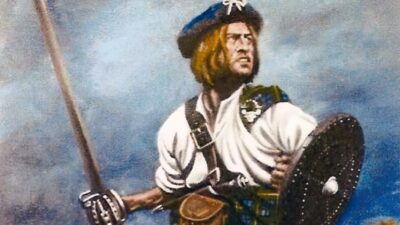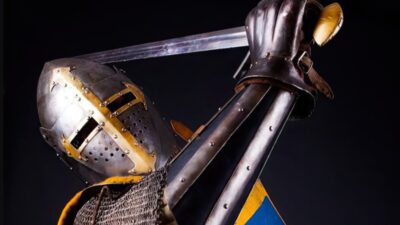Broadsword vs Arming Sword: Terms, History, and Combat Uses
NO AI USED This Article has been written and edited by our team with no help of the AI
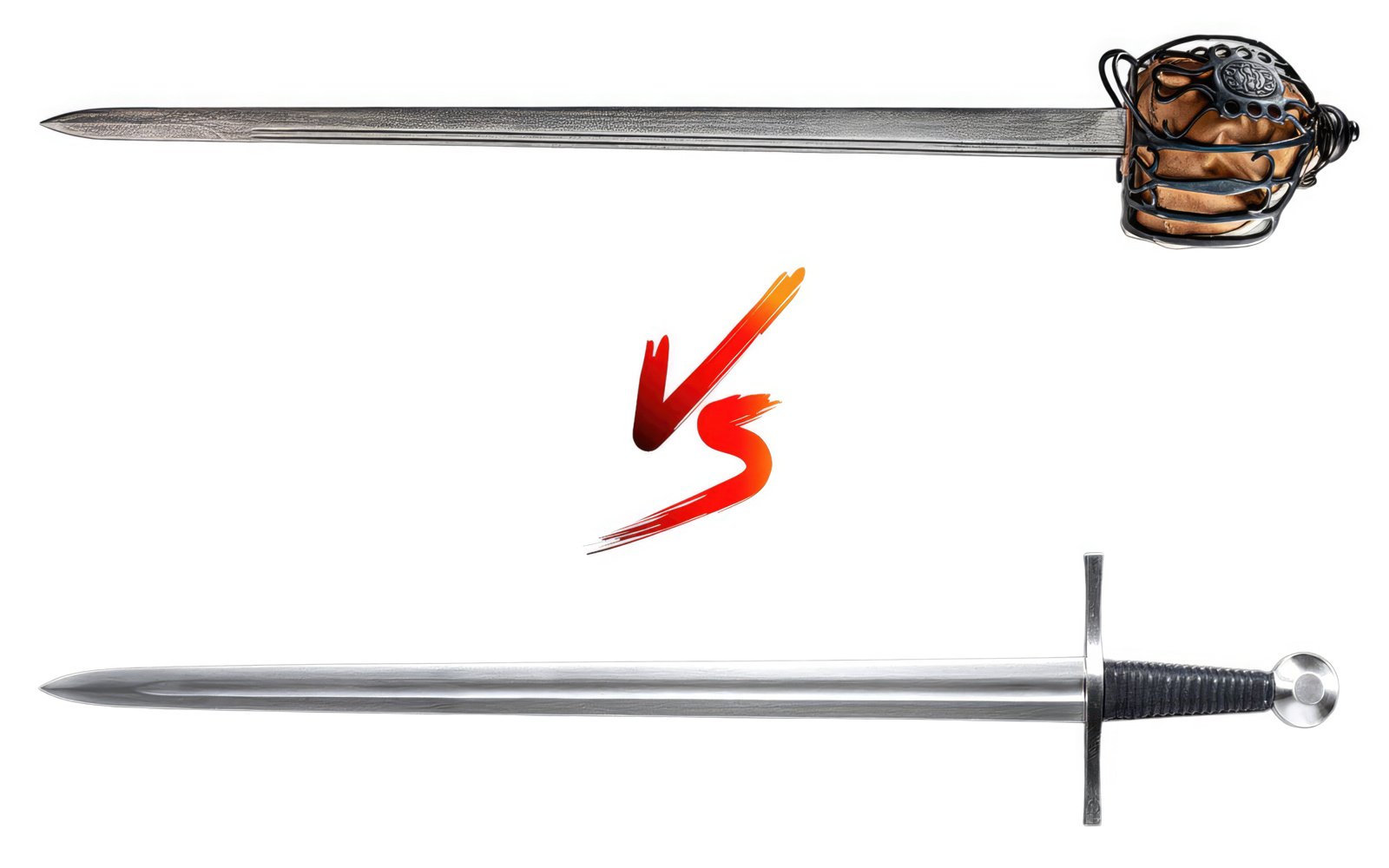
The broadsword and arming swords of Europe have similar blades but with very different hilt characteristics. Despite their descriptive names, there is often confusion, resulting in the widespread use of inaccurate terminology in pop culture. In this article, we explore the characteristics of the broadsword and arming sword, their differences, historical backgrounds, combat attributes, and more.
Terms, Characteristics, and Design Differences
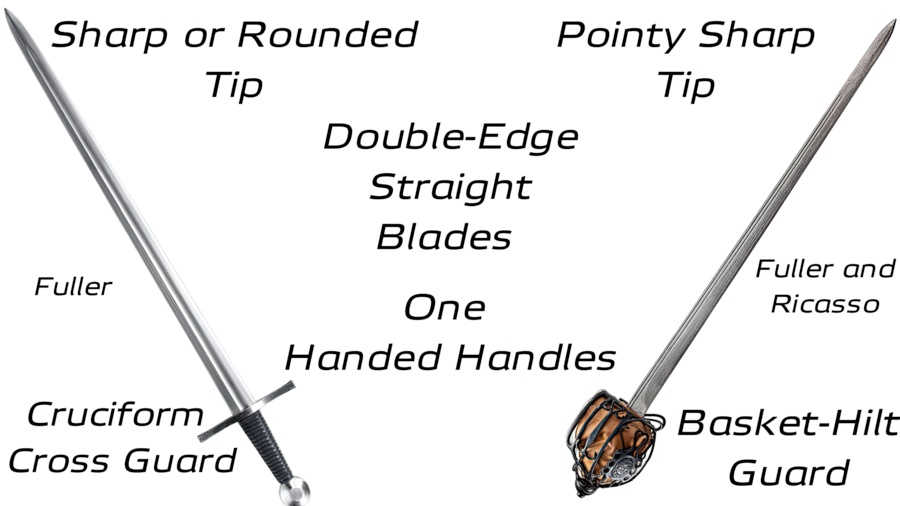
Since the broadsword emerged during a time dominated by swords with slim or narrow blades, its broader blade resulted in it being named “broadsword”.
For arming swords, it is named so as it was the main type of sword knights were armed with. Note that this term varies in historical texts and can be an umbrella term that evolved into other swords. Today, “arming swords” generally refer to one-handed cruciform-hilted blades with a pointy or rounded tip.
Depending on when the arming sword was designed or constructed, they vary in blade designs, best determined using Oakeshott’s typology. Some earlier arming swords with broader blades for cutting through mail armor are often mistaken as broadswords.
Blade
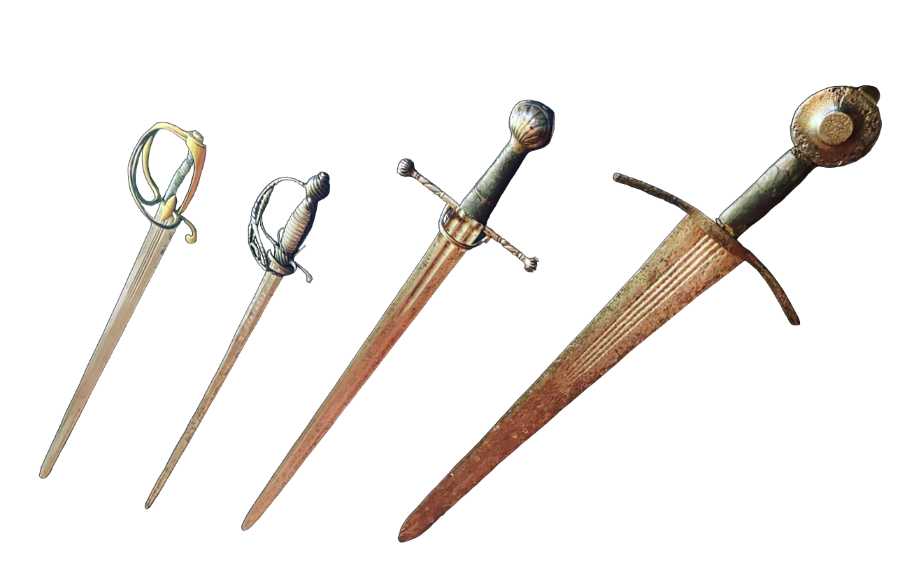
Both the broadsword and arming swords have straight blades made from high-carbon steel with the right balance between flexibility and strength. Similar in length, the broadsword’s blade is around 35 inches (90 cm) while the arming sword’s range from 27 to 35 inches (70 to 90 cm) long.
Although generally double-edged, some broadswords have a single-edged blade with a false edge – where the area near the tip is double-edged. There are also often multiple fullers or grooves near the blade’s spine.
For the arming sword, the blades are double-edged and can be broader than that of the broad sword. It also usually has a fuller running through its center to decrease the overall weight of the sword and to improve its point of balance.
Hilt
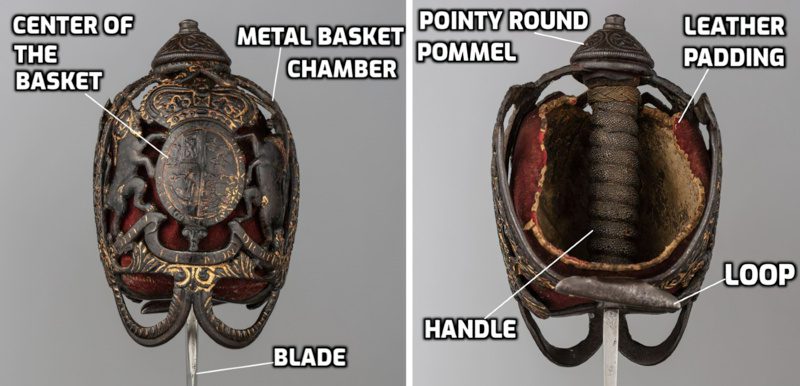
The broadsword and the arming sword are both one-handed swords with handles that are around 4 inches (10.5 cm) long. This is where the similarities end as the hilt is the main difference between the two swords.
Broadswords are known for their basket hilts with varying designs depending on its type. The patterns available include fully enclosed, half-basket (half-enclosed resembling a human rib cage), bars narrowing forward, S, cage, bow-tie, and more.
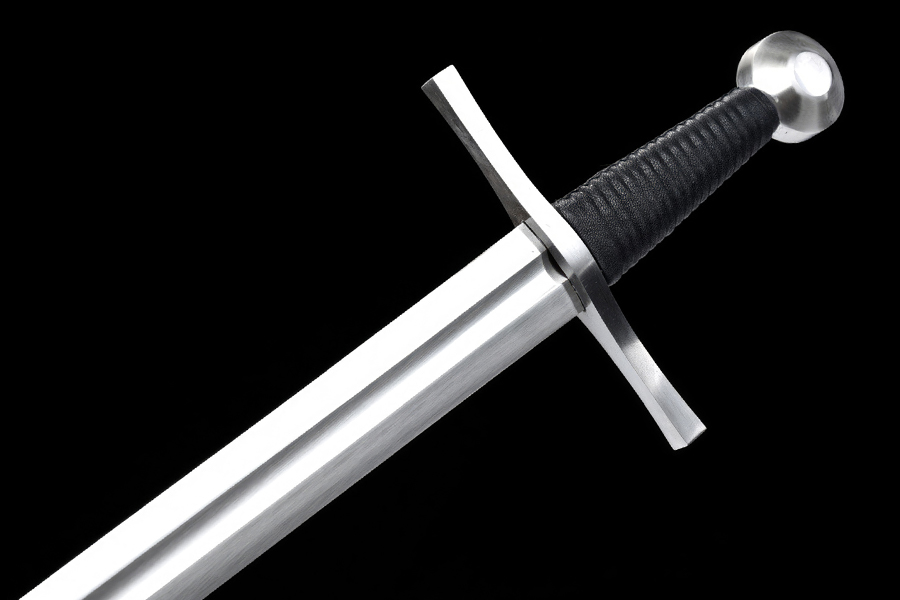
Arming swords are also one-handed swords with some featuring a slight gap for added flexibility. The crossguard of the arming sword varies in design as well. Known for its hallmark of a medieval cruciform crossguard, later versions of the sword have more sophisticated styles such as a bow tie, knobbed quillons, v-shaped, rhomboid, circular, and even an S-guard hilt.
Size and Weight
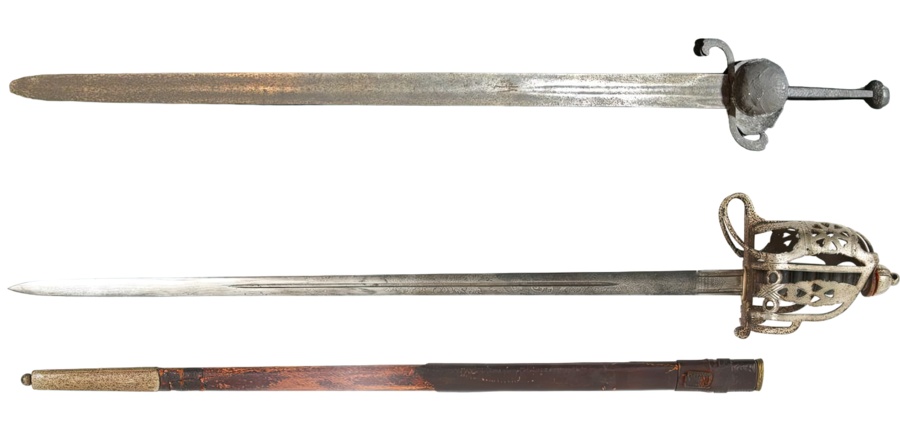
Despite being different swords, the broadsword and arming swords are fairly similar in size and weight.
Comparing the two, the broadsword is slightly longer depending on the type. It usually ranges from 35 to 45 inches (90 to 115 cm) with a weight of around 2.42 lbs (1.1 kg) with some examples reaching 2.9 lb (1.3 kg).
For the European arming sword, it is around 24 to 43 inches (61 to 110 cm) with an average weight of 1.76 to 2.86 lbs (0.8 to 1.3 kg). This makes it a fairly light sword to wield and easily used in conjunction with a shield.
Historical Significance
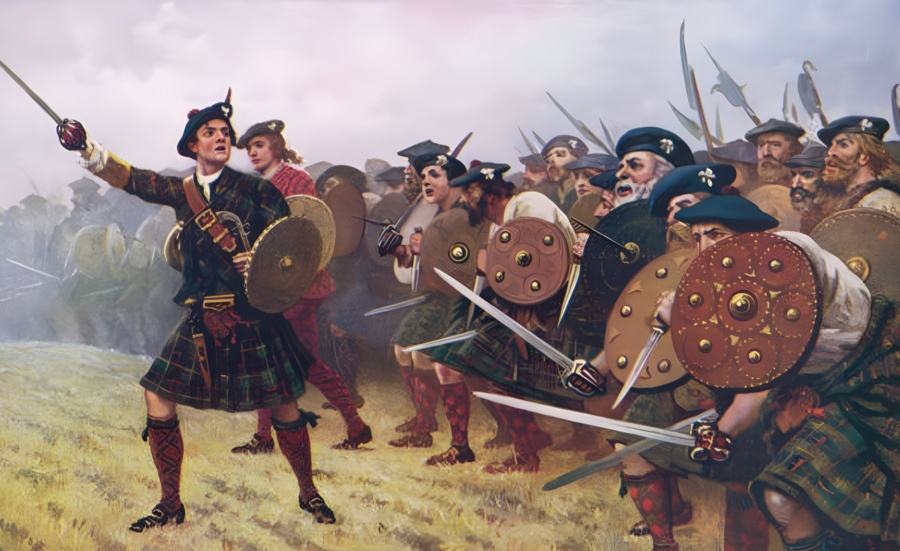
The arming sword is an iconic blade in European history. It is one of the first medieval swords of Europe that featured a crossguard in the form of a cruciform. It evolved around the 10th century from the previous Roman spatha, Merovingian or migration period blades, and the later Carolingian swords known today as Viking swords.
Used widely throughout Europe, its popularity resulted in its spread to the Middle East and Africa, especially before and after the Crusades. Due to its use by cavalry knights, it is often called the knightly sword.
Having inspired almost all the double-edged blades in European history, it adapted throughout the centuries to fit battle requirements such as cutting mail armor, piercing through the gaps of plate armor, being used as a two-handed weapon, or simply as a reliable sidearm for unarmored combat.
The broadsword’s best known form appeared during the 16/17th centuries in Central and Western Europe. In fact, some might even say it evolved from the arming sword. It is believed to have first appeared in Germany with crude hilts. Since its basket hilt offered significant hand protection for its wielder, resulting in it being called basket-hilted swords.
The broadsword is sometimes known as Scottish broadswords as they are used by Scottish high-landers in many battles. However, they did not originate from Scotland and was first inspired by English basket-hilted swords.
Combat Preference
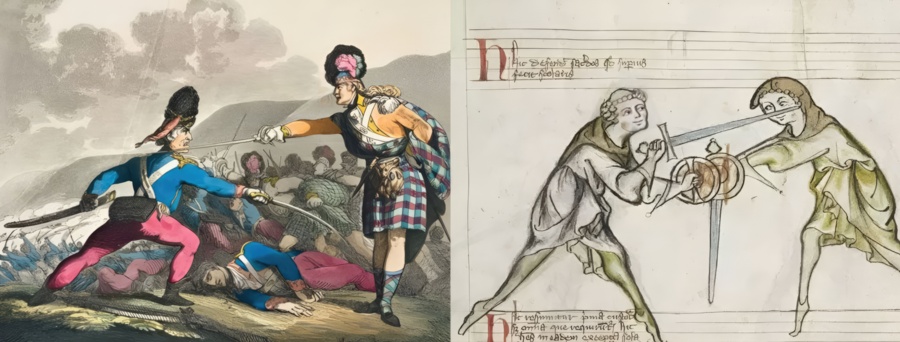
Both the broadsword and arming sword are versatile one-handed melee weapons used on horseback, allowing them to be used with a shield or a dagger in their other hand.
In history, the use of the arming sword in combination with a larger shield protected most of the user’s body and worked well in large battlefield formations. In dueling, it was used with a shorter buckler. Designed mainly as a stabbing or slashing weapon that could also be used to cut and thrust, its potential for partial two-handed use increases the impact of its strikes.
The broadsword is a proper cut-and-thrust weapon used in conjunction with a smaller buckler as. Some historical battles even saw it coupled with a smaller round shield. In some fighting treatises, especially in duels, it is used with a dagger. Although its protective hilt allows its wielder to attack or defend without injuring their hand, this feature also limits the user’s versatility when compared to the arming sword.
